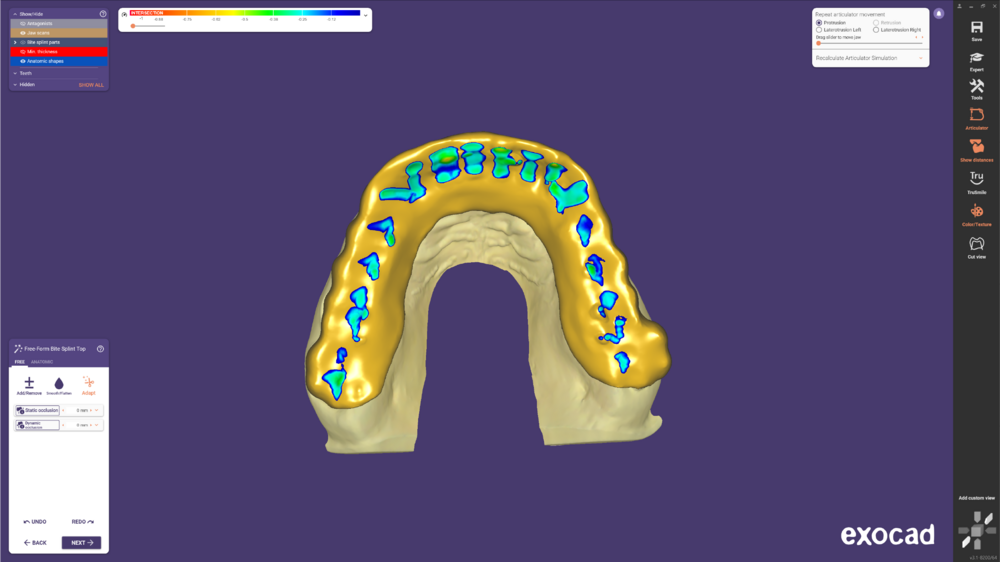To adjust the occlusion of the bite splint, see Adaptation to antagonists / approximal adaptation. It is helpful to use the "Distance to antagonist" tool to observe the effect of the adaptation - see section Visualizing intersections/distance to antagonists or anteriors for details on how to enable and use the color visualization.
With the antagonist distance visualization enabled, the colors on the bite splint are indications of the intersections between the bite splint and the opposing model/antagonist.
| If using the virtual articulator, you can choose between adaptation to the static bite, or dynamic occlusion adjustment. In the case of bite splints, it can also be useful to do both, but with different values for the Distance Anatomic Parts value - the value set during the static adaptation should then be higher. |
In the next step of the wizard, you will be able to freeform the Bitesplint top - as described in the documentation of the "Free" tab in Freeforming.








